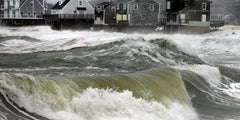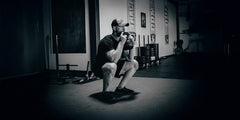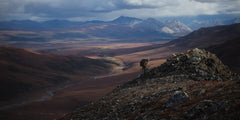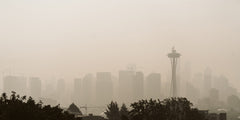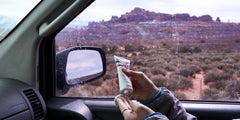
The sunshine is rolling in for the Spring. Birds are chirping, snow is melting, and more people are getting outside to soak up some much needed Vitamin D.
As with every rose, however, there is a thorn. And whether it’s friction, frying pans, or fair skin, your chance of having some sort of burn is highest in the warmer months. Below, we cover 3 of the most common burns, and how to avoid or remedy them.
Sunburn
Gone are the days of Panama Jack Coconut Oil (yeah, I’m looking at you, Dad) and in its place is an almost constant reminder to stay OUT of the sun. But that’s no fun. So here are our recommendations:
There are two basic types of sunscreen: Mineral and Chemical.
Chemical is exactly that - a bunch of chemicals. They work like sponges to absorb UV before it hits your skin. Chemical sunscreen tends to absorb quickly, and dry with an invisible finish, making them a no-hassle option with a lot of upsides.
For those with sensitive skin, or looking to be more environmentally friendly, mineral sunscreen may be the preferred method. Mineral basically works like a physical sun blocker, but that also means more in the way of leaving a little something you may feel on your skin.
Another alternative is UPF clothing - clothing designed to block UVA/UVB rays. For those of us that hate/forget to apply lotion all over, this is a great option. Even keep one in your car for those unexpected adventures or hikes between meetings.
Our recommendation really depends on what you’re doing, but here’s what I suggest: If you’re on the water, or going to be shirtless, get a high-numbered SPF chemical sunscreen and re-apply about every hour. If you’re looking at daily application, go with a mineral sunscreen and cut down on chemical exposure to your skin on the daily.
If you don’t need to have the tarp off, get some UPF clothing… I own several super light-weight hoodies that I wear on the hottest of days. I don’t have to worry about getting that one spot on my back that’s hard to reach, I don’t have to worry about re-applying, and I don’t have to feel that slimy layer between my skin and shirt. Put the hoodie on, get outside. If you want to take it off for a moment, a little Vitamin D is good for the soul. Just make sure to not stay exposed too long.
Friction
That word takes me back to the Michael Scott's Dunder Mifflin Scranton Meredith Palmer Memorial Celebrity Rabies Awareness Pro-Am Fun Run Race For the Cure. Michael finishes the race, but not before ruining his shirt due to… friction. IYKYK. Nothing can make a long run or hike more uncomfortable than friction. Fortunately, there’s ways around this…
Clothing - make sure you’re wearing well-fitting, breathable clothing. Going underwear-less and opting for running shorts with a liner is highly recommended. Bring pants in case you begin to chafe from shorts.
Shoes - ramp up to longer runs to check for hot spots in a new pair of shoes. I prefer a wide toe-box, allowing for your foot to expand as you run, and a nice soft heal without rub points. Running socks with reinforced heels, and toes without stitching are a great addition, and for super long runs, like marathons, I’ve first applied body glide on my entire foot. Trust me on this little hack :) If you do start feeling a hot spot, stop immediately and apply a blister gel, like the ones in our Triage Kit. The sooner you get on it, the better!
Body Glide - If I’m doing anything over 5 miles, Body Glide is included. It’s just not worth the risk to not apply. I like the deodorant stick form factor and I apply under my arms, on my ribs, crotch area, and feet. The stuff works and is a game changer.
Thermal
You touch something hot, you’re going to get burned. I don’t think we need to get deep on the science here. More helpful, maybe, is what to do when you accidentally burn yourself.
It’s important to know that blisters are your body’s way of protecting a burn spot. Do what you can to support your body’s mission at this point. Cool the area down by running it under cold water immediately, apply lotion (aloe followed by Vasoline is great!), wrap the burn, take an Advil or two and slow your roll until things calm down. Eventually the blister will start losing its puffiness - at this point, I prefer to pop the blister. The goal is to reduce pressure, but keep the protective skin on the burn until it naturally falls off. At night, un-bandage and let the wound area breathe and dry. Burns suck, but the body’s ability to heal is quite simply amazing. Take care of it and it’ll take care of you!

